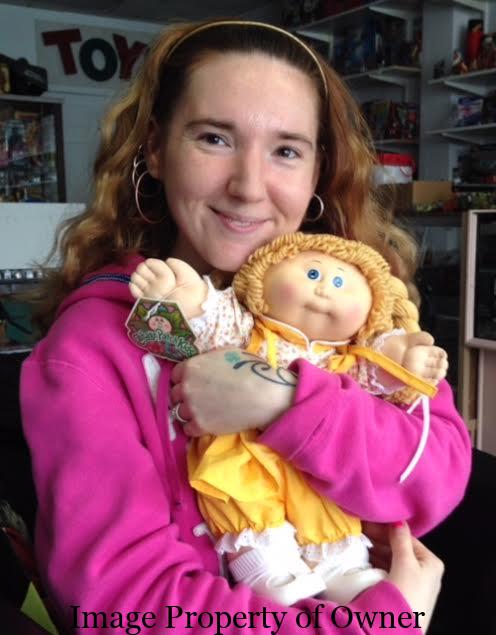 Disclaimer: Yello80s cannot identify or price any Cabbage Patch Kid dolls or products. The Cabbage Patch Kid Names lists are gathered from reader submissions of their dolls’ names or auctions for vintage dolls or their adoption paperwork as well as found through thrift store and yard sales. The list is compiled as an online source to satisfy curiosity, foster nostalgia and perhaps serve as a guide to rename your ‘Kid.
Disclaimer: Yello80s cannot identify or price any Cabbage Patch Kid dolls or products. The Cabbage Patch Kid Names lists are gathered from reader submissions of their dolls’ names or auctions for vintage dolls or their adoption paperwork as well as found through thrift store and yard sales. The list is compiled as an online source to satisfy curiosity, foster nostalgia and perhaps serve as a guide to rename your ‘Kid.
For Cabbage Patch Kid Names 1/4 click here.
For Cabbage Patch Kid Names 2/4 click here.
For Cabbage Patch Kid Names 3/4 click here.
For Cabbage Patch Kid Names 4/4 click here.For Furskins, Koosas, Show Ponies and Crimp n Curl Ponies click here.
For Cabbage Patch Kids Toy Merchandise click here.
For Cabbage Patch Kids Books, Games, Music, Videos and Butterick Patterns click here.
For Collector info click here.
For a history of Coleco click here.
History of the Cabbage Patch Kids:
So ugly they were cute, the Cabbage Patch Kid claim to fame was causing otherwise normal adult human beings to turn into crazed Christmas-stampeding lunatics in the mid-80s. Turning up not just as dolls but in books, video games, breakfast cereal, trading cards, games and much more, they were so popular parodies showed up as Garbage Pail Kids collector cards from Topps and years later as Lettuce Head Kids on Robot Chicken. And you know you’ve made it when Eddie Murphy sticks baby dolls in lettuce heads and sells knock off CPKs in Mr. Robinson’s neighbourhood.
The dolls themselves came in several sizes, every possible skin shade and hair colour known to man, a stamp of their creator’s name across the cheeks (nope, further down), and the wierdest, most random names on earth printed on ‘adoption certificates’ so you knew it was official. Throw in a real baby hospital in Georgia and you have a neverending franchise of dolls that could do anything and their accoutrements for the middle class that paved the way for American Girl.
Their humble beginnings in Appalachia:
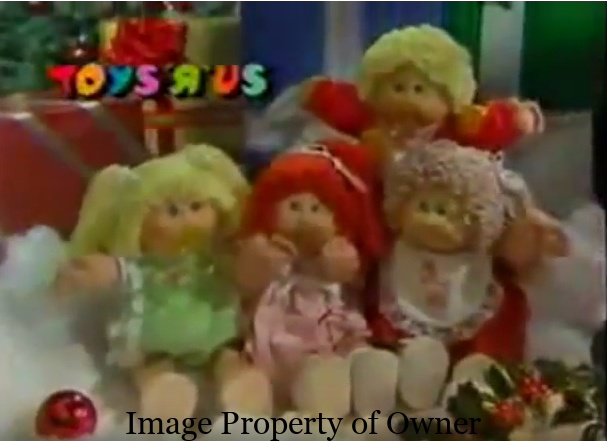
Coleco Kids
Created by artist Xavier Roberts, the dolls we remember from the 80s began in 1977. Roberts grew up in Cleveland, Georgia in as the youngest of 6 children in a very poor family. Having lost his father in a car wreck at age 5, Xavier learned quilting from his talented mother and as a teen taught himself the German art of “needle molding” from a book. Though he was teased for his name and his poverty, Xavier practised his craft until he became adept at sculpting animals and babies. The variety of expressions one could sculpt with babies held his fascination and soon he was making whole dolls using the German technique. Working in a textile mill and doing carpentry jobs with his brothers paid for Xavier to go to art school after high school. After school he went to work in a local state park where he ended up bringing his babies to put on display in the gift shop where he had been selling his own works.
Xavier did not intend the sell his babies but he did idolize Walt Disney and his rise from humble beginnings to incredible fortune. Like many artists he believed his work to be special and the dolls were not intended to be playthings. But the display he’d made charmed shoppers and when one woman approached him to buy a baby he told her the “child” wasn’t for sale but could be adopted for $30 (a large sum to him and one arbitrarily picked). She not only bought that first doll but commissioned him to make another based on a photograph. For the first time Xavier realised he had something others were interested in and he began producing his kids to bring to the world to adopt. Though when asked, he told others the dolls were from “the cabbage patch” (a common story mothers at the time told their kids about where they came from) he whipped up a sample birth certificate template based on his own and listed the birthplace of his dolls as the imaginary Babyland General Hospital.
Calling t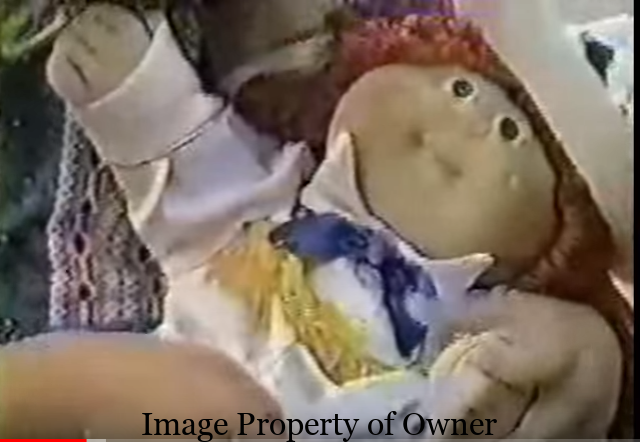 hem Little People, Xavier showed his kids off at local art and craft shows but his big break came in winning the first prize for soft sculpture in Florida’s Osceola craft show which he attended with fellow artist Debbie Morehead (she would be the first “mother ” listed on early Little People birth certificates). Dexter was the name of that prize winning baby. With his mother Eula and three high school friends Xavier had been producing Little People for order but with the resulting press over Dexter he got together 4 high school friends to begin production on 1000 Little People, hoping against hope they were making the right gamble with only $700 in credit per month to buy materials and almost no business sense between them.
hem Little People, Xavier showed his kids off at local art and craft shows but his big break came in winning the first prize for soft sculpture in Florida’s Osceola craft show which he attended with fellow artist Debbie Morehead (she would be the first “mother ” listed on early Little People birth certificates). Dexter was the name of that prize winning baby. With his mother Eula and three high school friends Xavier had been producing Little People for order but with the resulting press over Dexter he got together 4 high school friends to begin production on 1000 Little People, hoping against hope they were making the right gamble with only $700 in credit per month to buy materials and almost no business sense between them.
In 1978 Xavier incorporated his endeavours as Original Applachain Artworks, Inc. and made a deal to aquire the former Neal Clinic in Cleveland. The clinic had been the area’s maternity ward for years but had become derelict after Dr. Neal’s Death. Neal Clinic would become the real BabyLand General Hospital, a production workshop, business office and gift shop all in one where prospective “parents” would come to take an adoption oath and “adopt” a doll for $45 (bald baby), $60 (girl with hair), $75 (boy with hair) or $125 (standing Kid). Little People appealed to shoppers and collectors because they were each one of a kind; were big enough to wear real baby clothes and were displayed in real situations just like regular children. They also each had a good story about their own likes and dislikes so it was easy for even adults to pretend the Little People were real people. The first Little People were made in two lots of 1000 each, the A and B series. Following this, the C series contained 5000 dolls. (Babyland General relocated to jut outside of Cleveland in 2010.)
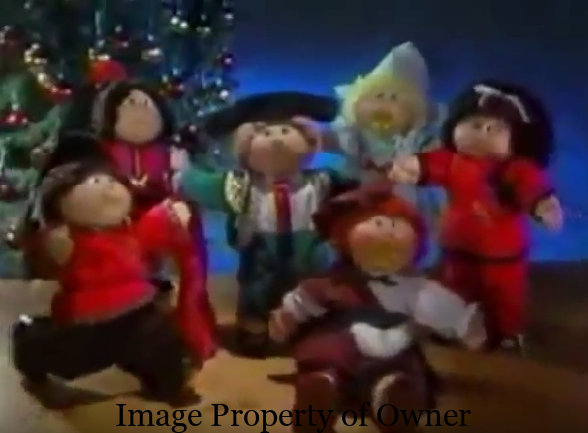
The original Little People dolls wore clothing he procured from yard sales, thrifts and flea markets. Their birth certificates were based in design on Robert’s own birth certificate, listing fellow artist Debbie Moorehead as the ‘mother’ and were adopted out for $30 at first and then $50 for bald babies and $60 for children with hair. At some point adoption agencies took issue with the dolls being ‘adopted’ because they felt it trivialized the adoption process for real children. When purchasing ‘Kids at official ‘adoption centres’ across the country, ‘parents’ were made to take an oath to care for their new ‘Kids, but everyone else had to mail in papers from their ‘Kid’s box to get adoption papers issued to them. After opening Babyland General, a newsletter detailing prototype kids’ adventures was published featuring iconic ‘Kids Tyler Bo, Otis Lee, Sybil Sadie, Amy Loretta and Plain Jane. Children who wrote into Babyland General to ask new parenting questions were replied to with the most serious of instructions like any hospital would naturally do. Fun fact: there was only ever 1 set of quadruplets delivered in BabyLand General in the 1980s.
Unable to get the kids into major department stores because he didn’t have the means to manufacture the dolls in the quantities needed, Xavier relied on small shops around the country referred to as “adoption centers” to get the kids into homes and spread the word around. In 1980 with the Little People’s popularity growing by leaps and bounds, Xavier Roberts met up with Roger Schlaifer, whose wife had brought home a doll as a collectible. Trying to pry Xavier into allowing him to work on a marketing campaign, Schlaifer eventually was successful in bringing the Little People to Coleco to manufacture for mass sale. This accomplished two things: it made the dolls more child-centered as playthings, thereby opening up the market to sell them in and in theory would be able to keep up with demand. It would also provide the ailing Coleco with a flagship product to bring it out of the financial doldrums after the Great Video Game Crash in the early 1980s. It was Schlaifer who made sure the concept of “adopting” a ‘Kid carried through to the Coleco marketing scheme. Licensing to Coleco also bolstered sales of the dolls who couldn’t compete with the 1981 recession across the US. The interest was there but the average family couldn’t afford the Little People price tag at the time.
The Coleco brand name Cabbage Patch Kids first used in 1982 comes from the children’s book The Legend of the Cabbage Patch Kids by Roger and Susanne Schlaifer, though this seems to have been re-published as Xavier’s Fantastic Discovery in 1984. What followed with the Coleco takeover was a national shortage of the dolls that led up to the infamous 1984 Christmas stampedes at various department stores around the country with injuries, arrests and retail mayhem. The media coverage was self-perpetuating; a perfect campaign that gave Colecto totally free publicity for its product. The insanity was such that Coleco was accused of staging the factory shortages on purpose to create demand and they were legally forced to pull ads for the dolls on grounds of false advertising a product they couldn’t provide. Cabbage Patch Kids will forever be known as the highest selling 1st year doll of the 1980s, shoving the former title holder Baby Alive right out of the crib. 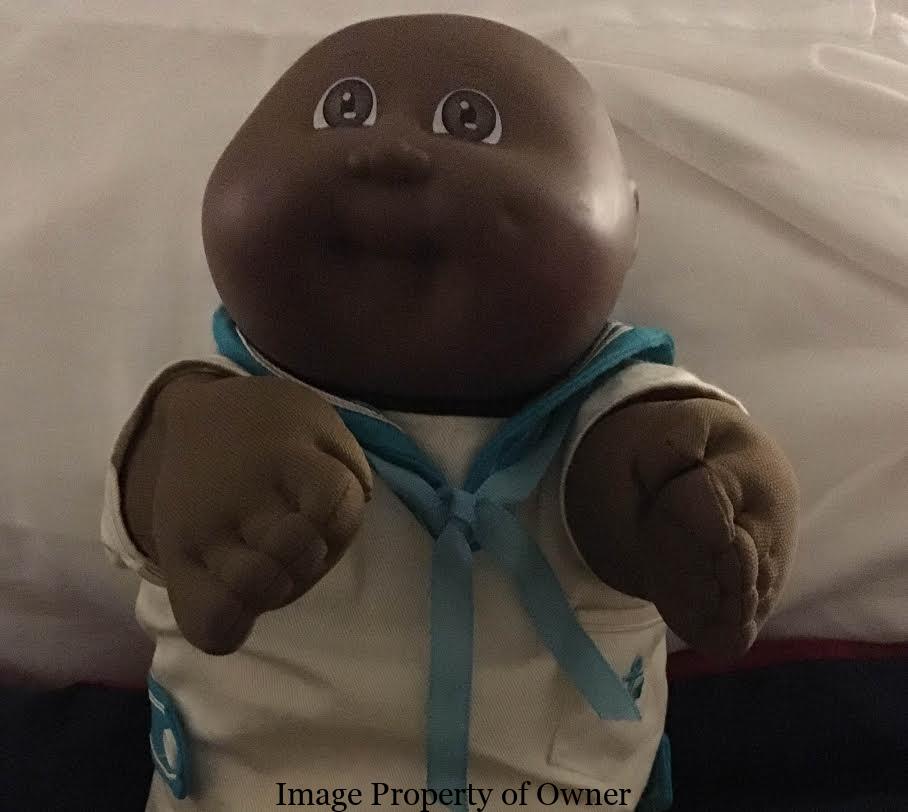
Cabbage Patch fever crossed the ocean to the UK and to bring the dolls worldwide Xavier Roberts licensed the ‘Kids in 1983 to toy manufacturers Jesmar (Spain), Lili Ledy (Mexico), Tsukuda (Japan) and Tri-Ang Pedigree (South Africa). In the US, Coleco manufactured ‘Kids until 1988 when Hasbro bought them out and took over production. ‘Kids from 1988-1990 were transitional dolls with features of both manufacturers. Following the Hasbro years, Mattel acquired the ‘Kids and all their accessories from 1995-1996 and then the ‘Kids went into hiding for a while, the craze gone silent until Toys R Us picked them back up from 2001-2002 then handed over the ‘Kids to Play Along Kids through QVC in 2003 to be followed by Jakks Pacific in 2011 and currently Wicked Cool Toys.
There are all kinds of Kids- seriously, all kinds. During the Coleco years, toy designer Judith Albert was in charge of bringing to stores the unique colour and hair combinations that made the dolls one of a kind though there have been accusations throughout the years that Coleco couldn’t possibly make the dolls all totally unique. Today they come with all manner of hair types and eye colours, skin tones (though the Coleco ‘Kids started out solely as either black or white dolls), freckles and dimples and abilities from talking to holding an object. ‘Kids have come in all sizes and materials from yarn hair to porcelain skin and in 1985 the ‘Kids got their own pets, ‘Kid-sized animals named Koosas. Show ponies later followed suit with matching cowboy outfits for your ‘Kid. Cabbage Patch Kids are as well traveled and skilled as Barbie- they’ve even come in Presidential versions. Nancy Reagan was famously documented as presenting South Korean children with ‘Kids and presidential daughter Amy Carter could be seen often with her ‘Kid. These days you can even buy them online direct from Babyland General Hospital.
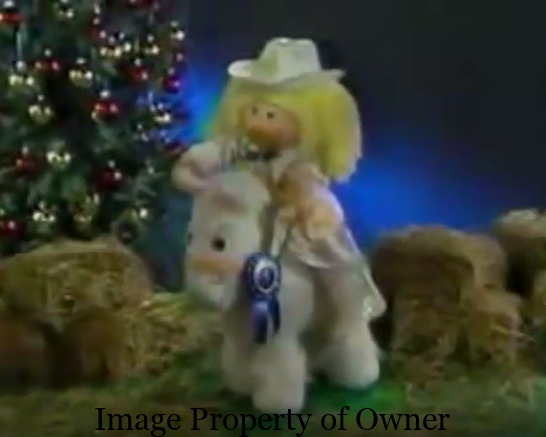
Western Kid and Show Pony
Controversy in the Cabbage Patch: Early on Xavier Roberts found himself in court for multiple lawsuits. For one, the adoption angle of the Kids angered a lot of people. Rights groups representing parents who had given children up for adoption blasted the process as belittling of the seriousness of adoption. Other groups were offended by the high price of the dolls, saying adults without children who purchased them would be better off spending that money to help actual children. Psychologists lamented the materialism they felt the Kids were foisting on the American public. Xavier himself sued others who infringed on the CPK copyright such as the Garbage Pail Kids line of collectible cards and knock off such as the Broccoli Kids, Cauliflower Babies, Flower Kids, Kraut Kinder, Pumpkin Kids and Taro Patch Dolls, Garbage Pail Kids (not making those up!). Others felt the Kids did actual adopted children good by bringing the language of adoption into the public eye and giving children a toy with an identifiable back story.
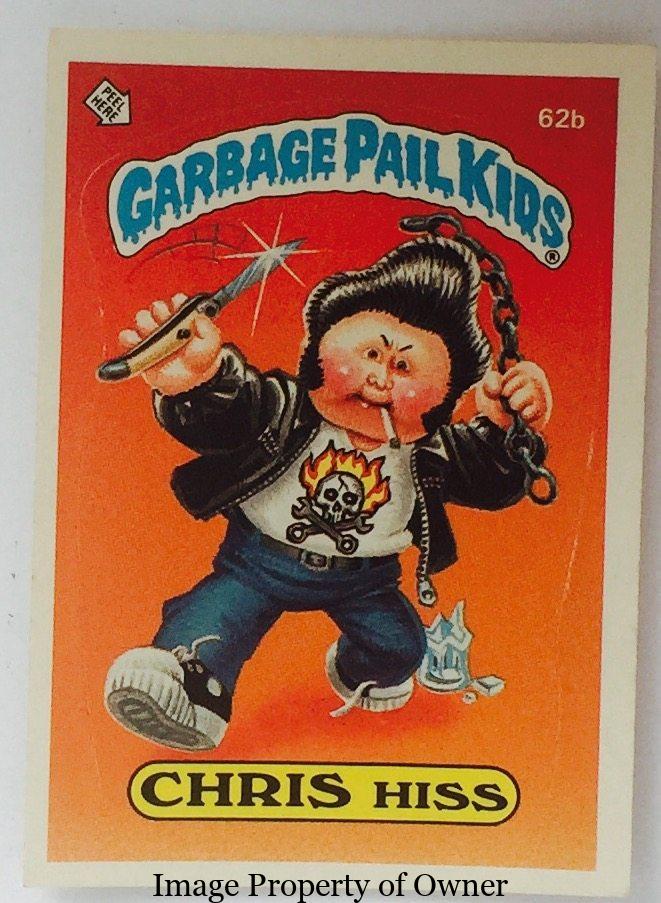
GPK property Too Groovy Toys
But the biggest controversy came early on for Xavier Roberts and often isn’t mentioned. In 1979 Kentucky artist Martha Nelson Thomas settled with Roberts for an undisclosed amount over infringement of design of her dolls the Little Doll Babies. Roberts met Thomas at the State Park in Cleveland he worked at where the Little People dolls were first displayed and made their first sale. According to family members, Roberts approached Thomas at a crafts fair to dislay and sell her dolls at the park’s gift shop but she declined as she gave her dolls away “by adoption” with their own papers. It is alleged that Roberts later wrote to Thomas to let her know he’d sell the dolls one way or another and shortly thereafter came out with his Little People.
Combined sources for all CPK pages on yello80s:
Fantasy: the Incredible Cabbage Patch Phenomenon – William Hoffman
Amazon.com
Little People Squidoo Lens – an excellent source of buying/ selling/ collector identification information
BBC hrg2 Cabbage Patch Kids
Cabbage Patch Kids Official Site
CPK Wiki
Cabbage Patch Kids Collectibles w/ Price Guide – Jan Lindenberger
Encyclopedia of Cabbage Patch Kids – the 1980s – Jan Lindenberger – an excellent source of info for serious collectors on everything from box variations to international dolls to variations on doll tags.
